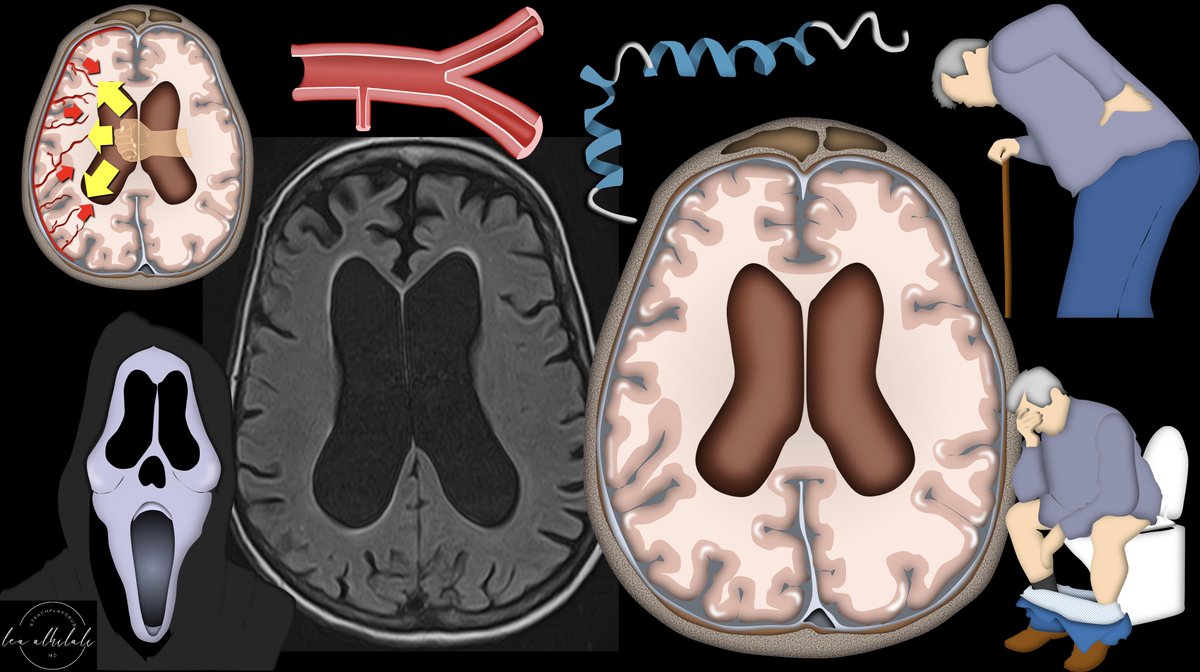1/I call the skullbase “homebase” bc you can’t make an anatomy homerun without it!
Most know the arteries of the skullbase, but few know the veins. Do you?
Here’s a🧵to help you remember #skullbase venous #anatomy!
#medtwitter #meded #neurorad #radtwitter #neurosurgery #radres
Most know the arteries of the skullbase, but few know the veins. Do you?
Here’s a🧵to help you remember #skullbase venous #anatomy!
#medtwitter #meded #neurorad #radtwitter #neurosurgery #radres

2/When I look at the skullbase veins, I see an angry Santa yelling at me. His eyebrows are raised, his mouth is open, & he has a mustache w/a big beard hanging down.
Each I look at the skullbase, I look for this Santa—bc each part of him is an important venous structure.
Each I look at the skullbase, I look for this Santa—bc each part of him is an important venous structure.

3/So let’s start w/Santa’s eyes. The eyes are actually not a venous structure, but an important landmark—foramen ovale, where the V3 trigeminal nerve exit.
I remember ovale is Santa's eyes bc eyes are OVAL, so his eyes are OVALE
I remember ovale is Santa's eyes bc eyes are OVAL, so his eyes are OVALE

4/Next are Santa’s angry raised eyebrows. These are the sphenoparietal sinuses.
I remember these are the eyebrows bc I call them “seen”-oparietal sinuses & you see w/your eyes.
These have this “eyebrow” shape bc they are following the curve of the greater sphenoid wing
I remember these are the eyebrows bc I call them “seen”-oparietal sinuses & you see w/your eyes.
These have this “eyebrow” shape bc they are following the curve of the greater sphenoid wing

5/Sphenoparietal sinuses meet in the middle at the cavernous sinus—like your eyebrows meet in the middle at your nose.
I remember the cavernous sinus & intracavernous sinuses are Santa’s nose bc you dig in a cavern. And where do all kids like to go digging? Their nose! 🤢
I remember the cavernous sinus & intracavernous sinuses are Santa’s nose bc you dig in a cavern. And where do all kids like to go digging? Their nose! 🤢

6/Right below Santa’s nose is his mustache & this is the basilar plexus, right below the cavernous sinus.
You can remember this bc mustaches are made of a base & handlebars—and the BASE of Santa’s mustache is the BASilar plexus
You can remember this bc mustaches are made of a base & handlebars—and the BASE of Santa’s mustache is the BASilar plexus

7/Extending from Santa’s mustache is his beard. These are the petrosal sinuses (inferior & superior), important in many neurosurgical approaches.
You can remember that the PETROsal sinuses make up sides of the beard bc you use PETROleum to smooth the sides of your beard
You can remember that the PETROsal sinuses make up sides of the beard bc you use PETROleum to smooth the sides of your beard

8/Finally, Santa’s mouth is the marginal sinus. I remember this bc the word marginal sounds like “Aaaargh”—the sound pirates make from their mouth. I call it the Maaaargh—inal sinus
So hopefully this thread has given you some ELF-confidence when it comes to skullbase anatomy!
So hopefully this thread has given you some ELF-confidence when it comes to skullbase anatomy!

• • •
Missing some Tweet in this thread? You can try to
force a refresh






















